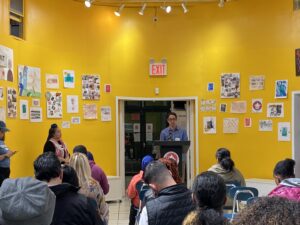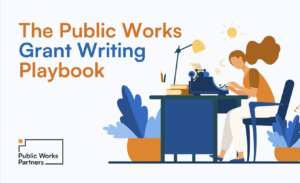Back in April, Public Works put together a run-down of the American Rescue Plan (ARP), identifying opportunities for nonprofits, civic organizations, and New York City communities stemming from the historic aid package. In May, the U.S. Department of the Treasury began releasing its funds, with $12.7 billion awarded to New York State and $5.9 billion going to New York City. In total, the City is expected to receive over $22 billion across a range of funding categories. Now, five months later, we’re back to offer the latest on how that money may be making its way into the City budget and how debates over its allocation reflect long-standing tensions elevated by the COVID-19 pandemic.
As we touched on in our first post, the ARP stands out not only for the high amount of funding it offers—at $1.9 trillion in aid it is the second largest stimulus package since the COVID-19 pandemic began—but also for the flexibility with which the money can be spent. As the pandemic continues to impact New York City communities, this distinct combination has sparked major debate over how New York State and New York City are to best use the recovery funds. How can the City and the state use this funding to bring back vital services cut during the pandemic while aiding the most vulnerable New Yorkers and creating equitable opportunities that last after the ARP funds are used? Striking this balance should be a key concern of agencies and policymakers moving forward.
New York City Context
The $98.7 billion budget passed in June is the largest in the City’s history. The fiscal year 2022 budget is approximately $10.5 billion higher than 2021’s, which saw cuts across departments as the City managed a loss in tax revenue and high spending dedicated to managing the COVID-19 pandemic. This year’s budget increase stems from the influx of ARP funding and the higher than anticipated tax revenues gathered this past year. Of note, parks, libraries, key cultural institutions, and the Department of Sanitation saw their budgets rebound. The opportunity this year’s budget represents is two-fold: it allows for departments to bring back programs that were cut in the 2021 budget while also opening the door to new programs and initiatives.
Where is the Funding Going?
While we can’t be sure exactly how the ARP funding is being allocated in the City budget, we do know that a number of departments saw significant increases in funding. Mapping how these increases are being used across departments showcases the different opportunities for impact.
Due to the COVID-19 budget cuts, the City’s Department of Sanitation (DSNY) took a massive hit of $106 million in 2020. One ramification of this was the suspension of curbside composting, a popular program designed to collect food scraps and other organic matter to compost or convert into renewable energy. The announcement of the suspension of curbside compost in 2020 was decried by many, especially considering that waste management continues to be a challenge in New York City. While core services remained in operation during this time, it was hard to ignore the fact that food scraps and other compostable waste account for more than 30% of trash in NYC. After a nearly 15-month suspension of curbside compost, in August of 2021 the return of the program was announced. Making sure that the composting program and other measures that promote green practices through public infrastructure, including zero-waste and efficient collection strategies, remain viable and accessible will be essential for keeping NYC at the vanguard of environmental sustainability.
The NYC Department of Parks and Recreation offers another perspective on how to approach budget increases. The Parks Department, which provides the primary interaction with nature for approximately half of New Yorkers, even before the pandemic, particularly struggled this past year as they dealt with a $84 million dollar budget cut and a higher rate of visitors than ever before.
Now, with a budget of $620 million, a $117 million increase from last year, Parks leaders are looking to hire back staff, return to typical maintenance levels, and to prioritize new initiatives that improve equitable access to green space for New Yorkers citywide. These could include the creation of new green spaces in underserved areas, renovations to existing play spaces, and investment in resiliency plans for natural areas in vulnerable communities, all strategies called for by the advocacy group New Yorkers for Parks. While it is not yet clear how these strategies will play out, the focus on translating pain points illuminated in the last year and a half into action steps is laudable.
Making These Investments Last
The 2022 budgets of the City’s Sanitation and Parks Departments show both the damage caused by the pandemic and the momentum and opportunity it created. Thanks to an influx of funding in part from the American Rescue Plan, the Parks Department, DSNY, other city departments, and City cultural institutions are now better positioned to put ideas incubated over the last year and a half into action. Through careful planning, equitable community engagement, and intentional incorporation of lessons learned, the City can magnify the impact of the funding by making sure the programs it pursues meets community needs and are sustainable over time.
Public Works has a history of working with city departments and other organizations to create strategic plans and promote their organizational health. We are excited to see how these funds may open new opportunities for the communities we serve.





 Public Works Partners is a WBE/DBE-certified urban planning and consulting firm. Our expertise lies in creating innovative, equitable, and sustainable solutions to complex problems.
Public Works Partners is a WBE/DBE-certified urban planning and consulting firm. Our expertise lies in creating innovative, equitable, and sustainable solutions to complex problems.